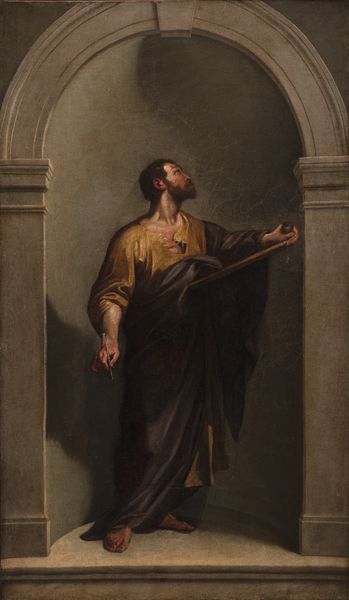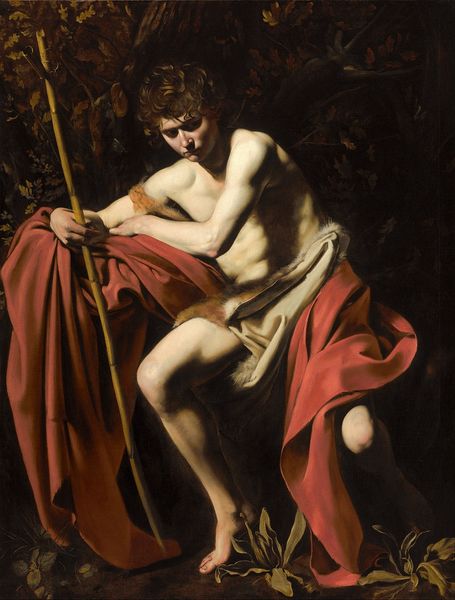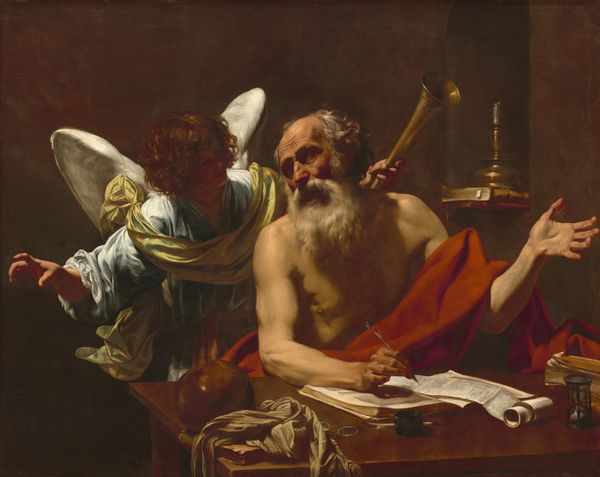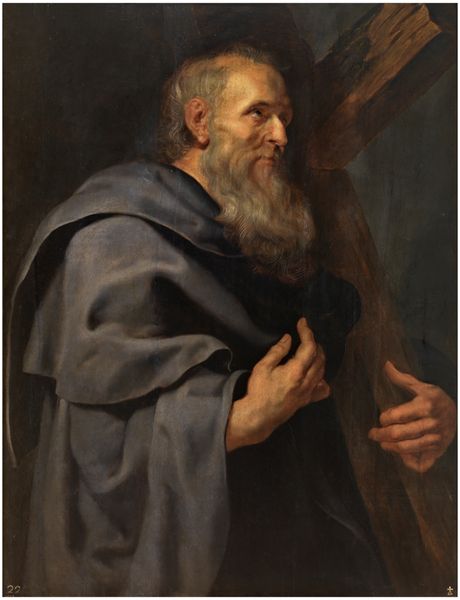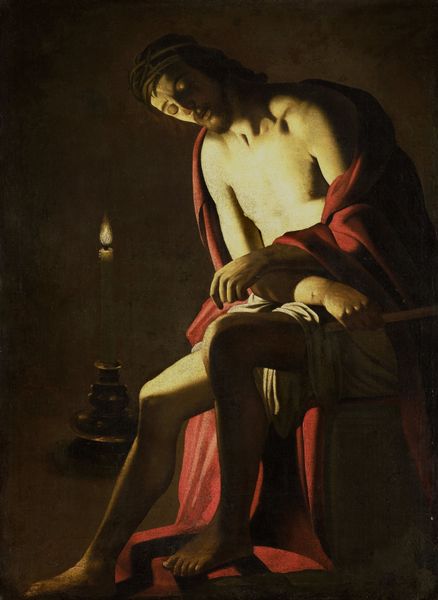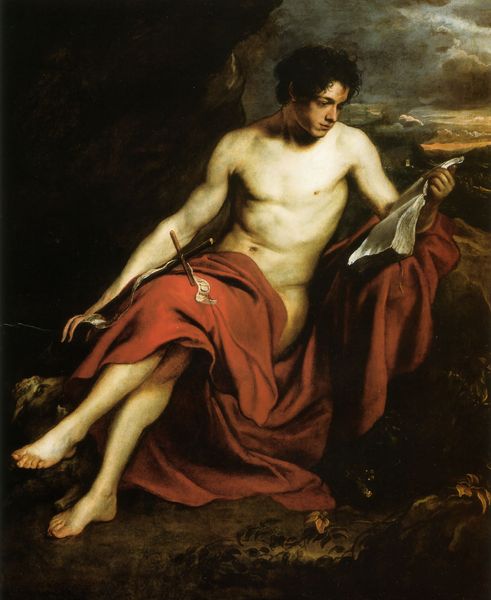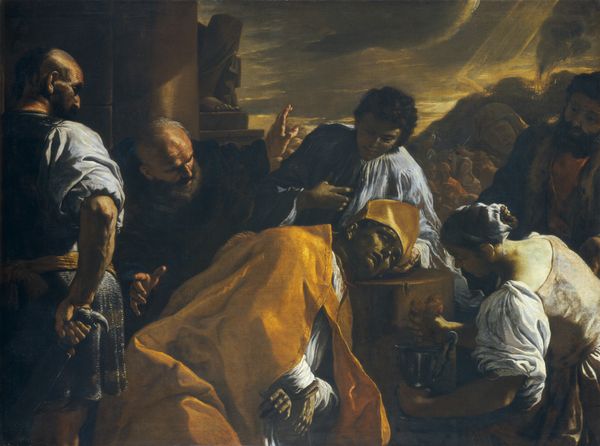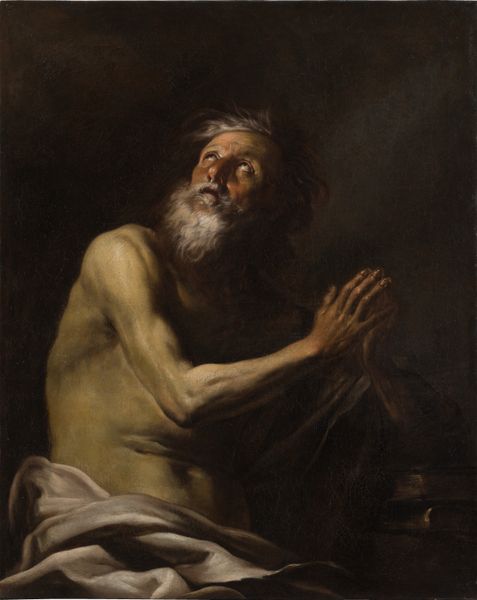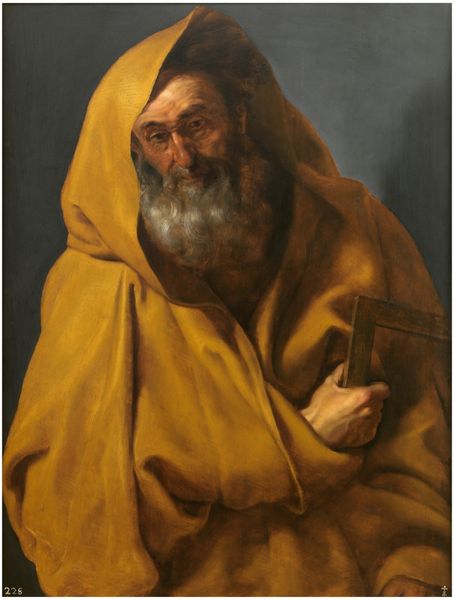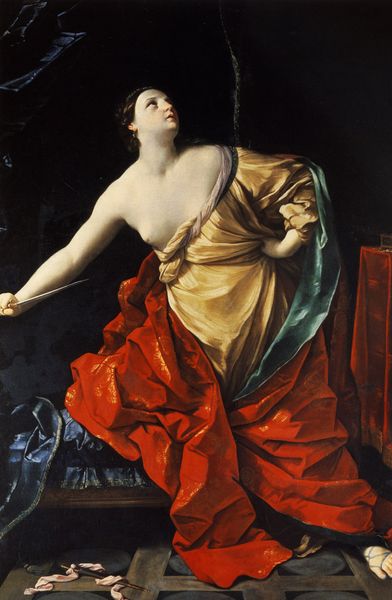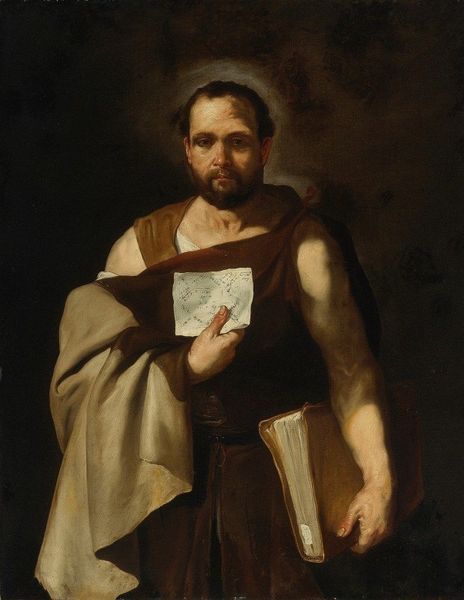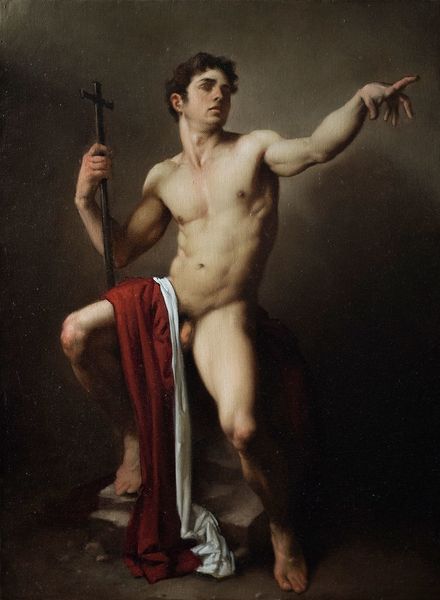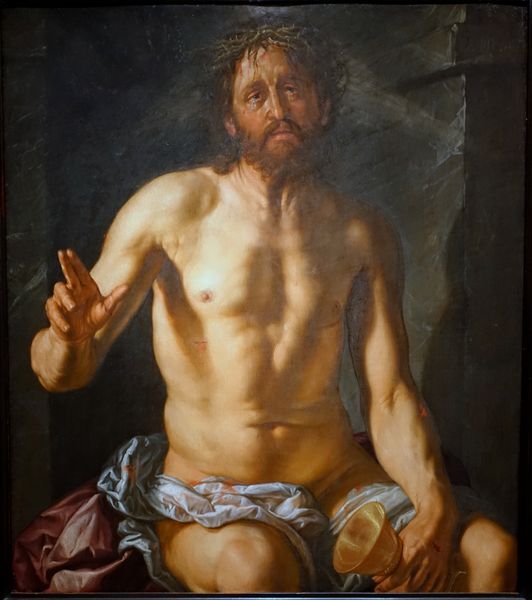
The Venerable Miguel Gerónimo Carmelo 1628 - 1630
0:00
0:00
oil-paint, oil-on-canvas
#
portrait
#
baroque
#
oil-paint
#
chiaroscuro
#
history-painting
#
oil-on-canvas
#
portrait art
#
fine art portrait
Dimensions: 44 3/16 × 34 3/4 in. (112.2 × 88.3 cm) (sight)54 × 44 5/8 × 3 1/2 in. (137.2 × 113.3 × 8.9 cm) (outer frame)
Copyright: Public Domain
Painted by Francisco de Zurbarán, this depiction of 'The Venerable Miguel Gerónimo Carmelo' captures our attention through its dramatic use of light and shadow, a hallmark of the Baroque style. The composition is strikingly simple: a monk seated, bathed in a divine light, holding an open book. Zurbarán masterfully uses the folds of the monk’s white habit to create a complex interplay of light and shadow. These aren't just aesthetic choices; they function to draw our eye, creating a visual rhythm across the canvas. The stark contrast between light and dark not only adds drama but also emphasizes the texture and materiality of the fabric. This focus on materiality extends beyond mere representation. It invites a deeper consideration of presence and absence, visibility and invisibility. Is the book a symbol, a sign, or both? And what does the semiotic system of signs reveal? Ultimately, Zurbarán invites us to consider how these formal qualities work together to create meaning, challenging us to look beyond the surface to the underlying structure of the artwork.
Comments
minneapolisinstituteofart almost 2 years ago
⋮
Francisco de Zurbarán was a leading painter in Seville in the 1620s and 1630s, celebrated for his religious paintings and depictions of monastic life. He represents “The Venerable Carmelo,” as a humble friar, with rough features and mouth agape, seized by a vision of a miniature Virgin Mary. Carmelo proclaims in the Latin inscription parting from his mouth “Tota pulchra est amica mea,” that is, “You are all beautiful, my darling.” The phrase derives from Song of Songs (4:7), which Carmelo reportedly was studying when he had this vision. The words were also in a popular Catholic prayer about the Virgin's Immaculate Conception, which states "You are all beautiful, Mary, and the original stain [or sin] is not in you.” Carmelo, a member of the Mercedarian order in Barcelona, wrote a treatise on this subject. The painting's intense light and immediacy are characteristic of Zurbaran's style. He emphasized the monk’s physical presence, depicting him in the foreground and stressing the tactile qualities of his robes—the supple surface of the white wool and thick drapery folds. The exquisite treatment of the garment focuses the viewer’s attention on Carmelo and his impassioned reverence. “The Venerable Carmelo” was executed for the monastery of the Mercedarians in Seville. It and its pendant, “Saint Serapion” (signed and dated 1628, Wadsworth Atheneum, Hartford, Conn.), decorated the Sala de Profundis, the room where the deceased monks were prepared for burial. The Mercedarian friars were a Mendicant order dedicated to the redemption of Christian captives. Friars ransomed themselves for hostages who lacked the means to buy their freedom, and sometimes sacrificed their lives to do so. Serapion was such a martyr, captured by English pirates, tortured, and disemboweled. As a pair of paintings, "The “Venerable Carmelo”, shown looking up in inspiration, represented the contemplative life of the friars, while “Saint Serapion,” depicted as a martyr, represented the active life.
Join the conversation
Join millions of artists and users on Artera today and experience the ultimate creative platform.
